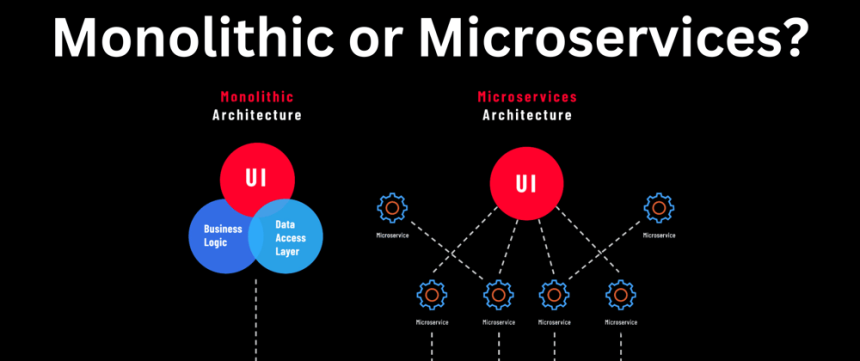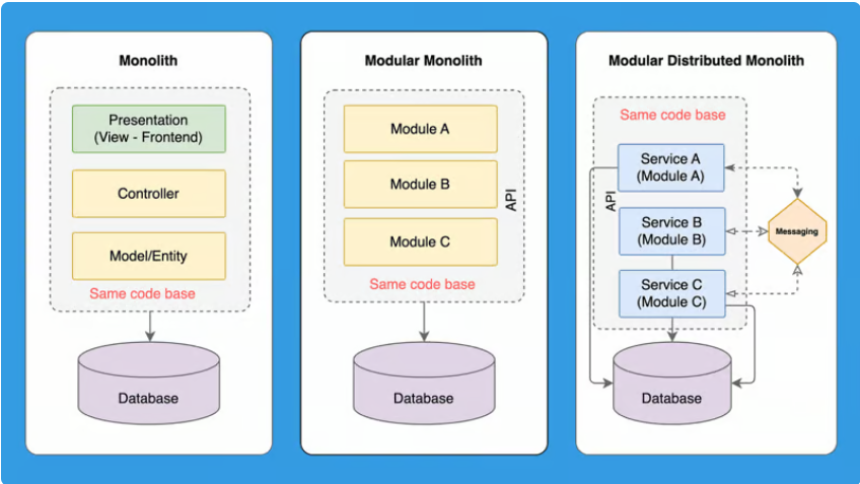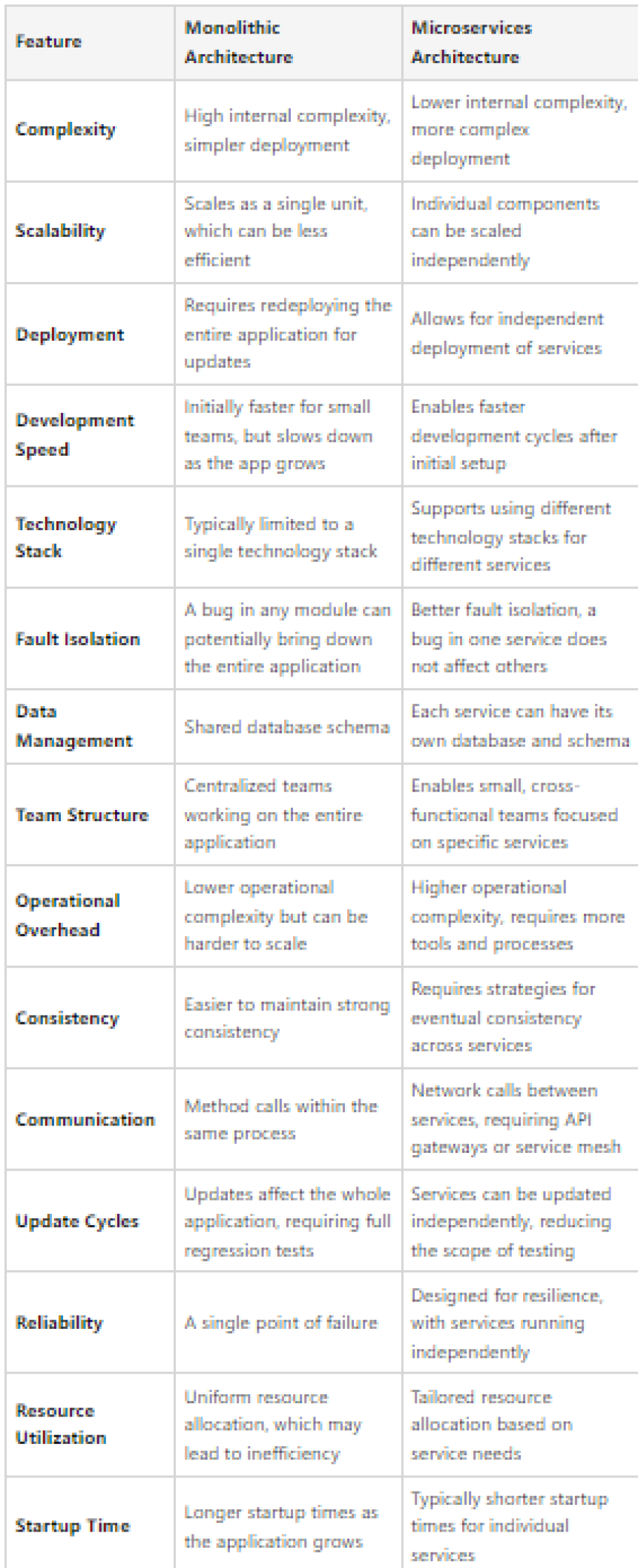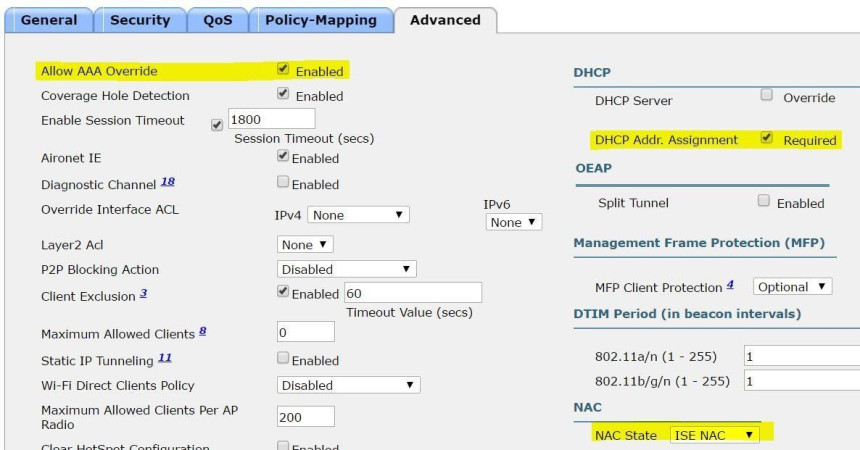
Monolithic or Microservices?
The debate between adopting a Monolithic architecture versus a Microservices approach has become a pivotal decision point that can shape the future success and scalability of a project. Let's explore the options each choice will lead us to.
We all know about Netflix, one of the biggest video streaming service provider. In 2009 Netflix experienced significant issues in scaling as their business model shifted from DVD rentals to streaming videos. They previously had monolithic application with all the application components bundled together. To address these challenges, Netflix started transitioning to microservice architecture which involved the break down of the application in to smaller and manageable components(loosely coupled) and making it possible for each component to be scale individual as need be. Netflix did encounter a lot of issues in performing this since by then it was not common and a name has not really be attributed to such practice. One of the biggest issues they encountered was in managing the complexity of data and the numerous new services, as well as service discovery and load balancing.
Several other companies did faced similar challenges while migrating from monolithic architecture to microservices. Some of these include: eBay, Amazon, Twitter, LinkedIn, Uber.
What is a Monolithic Architecture?
This is an architecture where the software program is designed to be self-contained, and all software program components are tightly coupled rather than loosely coupled, each component and its associated components must all be present for code to be executed or compiled and for the software to run. In monolithic architecture we have a single code base which couples all together the business logic of the application. Whenever there is a change in the code base structure or any other thing, the whole application will need to be reloaded, this makes updates restrictive and time-consuming. Monolithic architecture is convenient and suitable for early stage of project, since it provides ease of code management.
Advantages of a monolithic architectureSome advantages bundled together with the usage of monolithic architecture include:
- Easy deployment: A single executable file, directory or project makes the deployment easier.
- Easy development: Building an application with a single code all bundled together is much easier than a decoupled project.
- Simplified testing: With monolithic applications we have all the application as a centralized code base, which makes it easier to perform end-to-end testing and makes it faster than doing same on a distributed system.
- Easy debugging: Debugging a centralized app with all the code and logs present on at a single location makes it easy to trace up the errors and identified the bottlenecks.
- High performance: System calls can be made directly to the application host and no need of establishing a specific communication medium between two or more services.
Despite the above listed advantages, we found some drawbacks in using monolithic architectural designs.
- Slower development:
- Even though we have enjoyed easier development when working with this architecture, it is common to experience slower development time, since all the code base and application components are all bundled together.
- Scalability:
- Scalability is becomes a tedious task as we expand and onboard more users.
- Deployment:
- A change in a monolithic application will require a new deployment of the entire monolith.
- Reliability:
- This is less reliable since a failure in any module will cause the downtime of the whole application.
- Flexibility:
- Any fluctuation or change in the technology or stack or updates in dependencies of the project will affect the whole project. This makes changes very expensive and time-consuming and also leads to a constraint in technology usage.
This is an architectural approach which consist in breaking down an application in smaller, independent services that can be developed, maintained and deployed separately. Here each service owns its own business logic and database and have a particular purpose. Updates, testing, deployment and scaling occur within each service.
Advantages of a Microservice Architecture- Agility:
- Agility is common with small teams working on different services.
- Flexible scaling:
- When a microservice reaches at max of its capacity, new instances of that service can be deployed to share up the load. It is very common to experience horizontal scaling here.
- Maintenance, Testing and Troubleshooting:
- It is easy to experience new functionalities and features without causing the downtime of the whole application.
- Independent deployment:
- Deployment of each service is done separately and independently without affecting the functioning or state of the other components.
- Technology flexibility:
- Since each microservice is an item on its own, it makes it flexible to changes in technology or dependencies.
- High reliability:
- Deployment and maintenance can be performed without fear of bringing down the entire system.
- Development issues:
- Due to the amount of different services, we can face some issues in managing the large amount of teams. Using microservices adds more complexity as compare to a monolith.
- Debugging challenges:
- Each microservice has its own set of logs, which makes debugging more complicated. Plus, a single business process can run across multiple machines, further complicating debugging.
- Communication challenges:
- The different teams will need a better level of understanding, collaboration and communication to coordinates updates and interfaces.
Are you still having doubts on choosing the right one for your platform between these two options? Let's consider the questions below:
- What is your application size?
- What is your target audience?
- What will be your infrastructure needed?
- what is your team competency and flexibility to change?
When you encounter a change in business model and you choose to switch your existing platform to a microservice architecture, you can consider the steps below during the migration.
- Map out a migration strategy
- Adopt DevOps practice
- Practice team communication
- Choose a good cloud provider
- Build the microservices
- Migrate the existing data
 Conclusion
ConclusionTransitioning from monolithic to microservices architectures marks a strategic evolution, offering scalability, agility, and innovation despite initial challenges, paving the way for future-proof and resilient software development.





